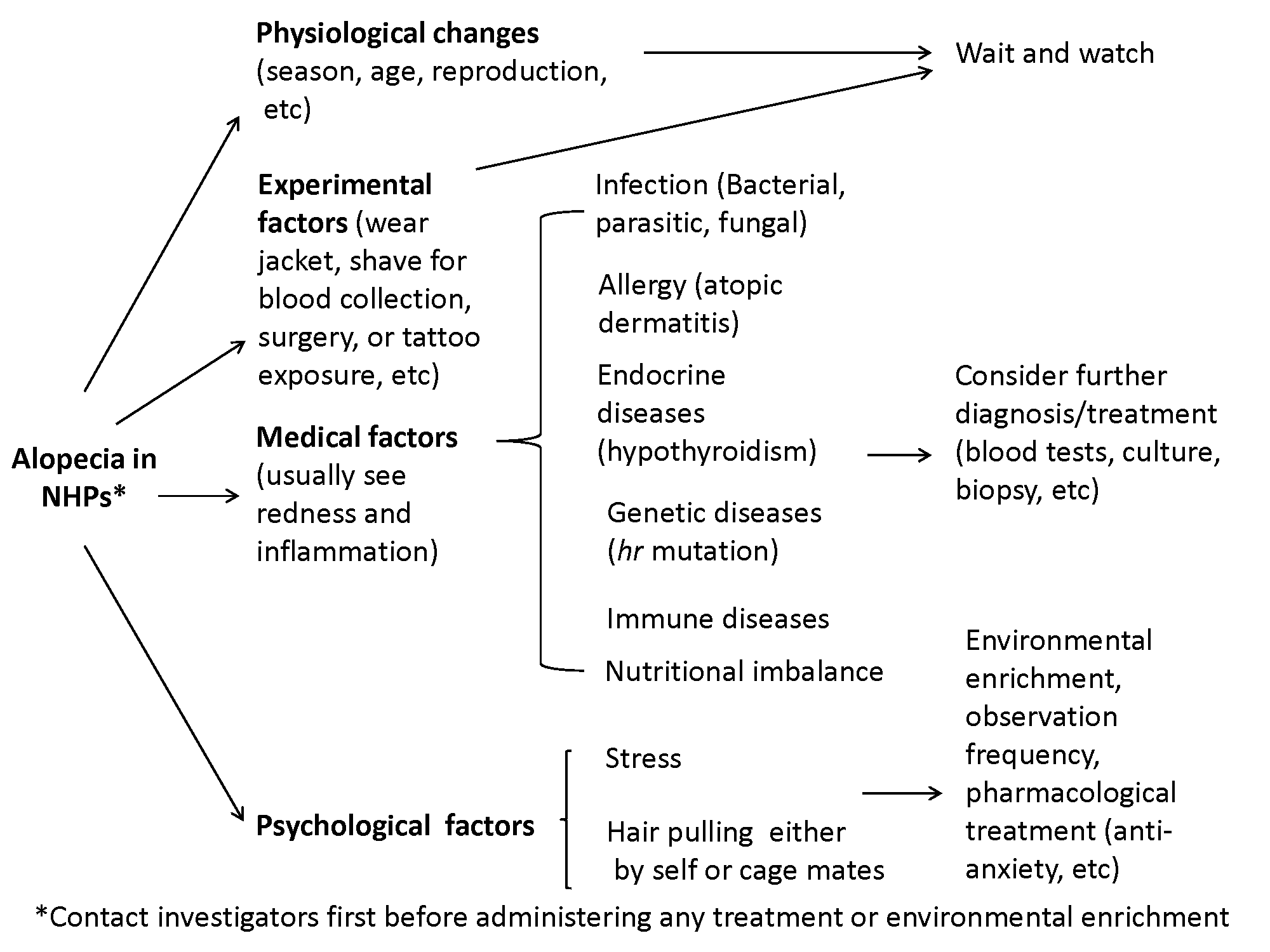Evaluation of Alopecia in Non-Human Primates
Alopecia is a common problem in captive, non-human primates (NHP). Alopecia is manifested as hair loss without any clinical changes at the skin surface. This condition can be a result of various causes including clinical, environmental, or behavioral factors. Due to the wide variety of clinical presentations, assessing this condition can be challenging. Potential clinical causes of alopecia include ectoparasites, allergic disease, autoimmune disease, endocrine disease, nutritional deficiencies or imbalances, aging, stress, or others (see Appendix B). Evaluation of alopecia is subjective; therefore, a standardized method needs to be implemented. The intent of this scoring schematic is to aid in consistency of diagnosis and monitoring changes over time.
Questions?
If you have questions or comments about this document, contact ULAM Veterinary Staff ([email protected] or 734-936-1696).









